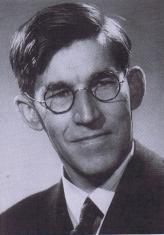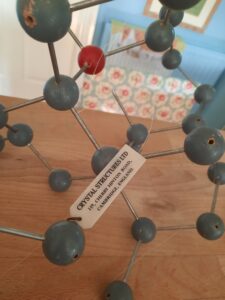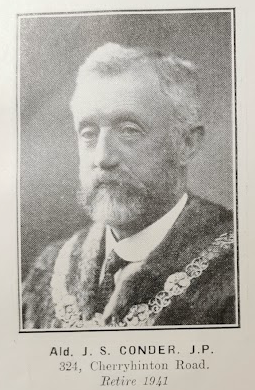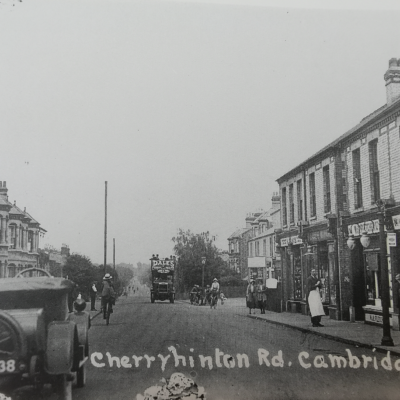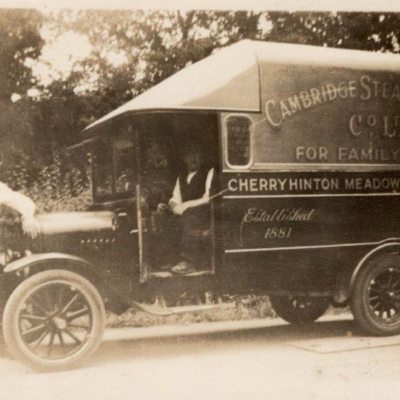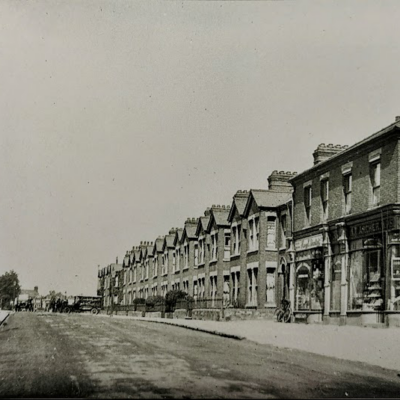Search by topic
- archaeology
- architecture
- bricklayer
- Building of Local Interest
- carpenter
- church
- crime
- dressmaker
- fire
- Great Eastern Railway
- listed building
- medieval
- oral history
- Public House
- Rattee & Kett
- Religious House
- Roman
- scholar
- school
- Then and Now
- tudor
- women
- work
- world war one
- world war two
Search by text
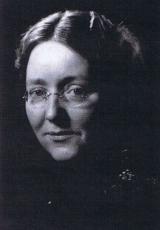 Nora Wooster
Nora Wooster339 Cherry Hinton Road, Brooklyn House
History of 339 Cherry Hinton Road
1881
Carter C Willson [sic], banker’s clerk
Sarah E, 30,
Newport G.,
Elizabeth B.,
William J.,
Nora E.,
Mary Ann Duce, governess, 22, born Gt Shelford
Bertha Porter, servant, cook, born unknown
Ellen Webb, servant, nurse, born Cambridge
1891
(Brooklyn)
Carter Childerly Wilson [sic], 42, banker’s clerk banks,
Newport Granger Wilson, son, 14, born Cambridge
Beatrice Elizabeth Wilson, 13, born Cambridge
William Thomas, son, 11, born Trumpington
Norah Emily, daughter, 10, born Cherry Hinton
Norah Sibella S Johnson, governess, 20, born Bucks.
Emily Mary Nicholls, servant, 20, housemaid, born Cambs.
Susan Barton, servant, 23, cook, born Cambs.
1901
(property unnamed)
Carter C Willson, bank cashier
Sarah E
Norah E, 20, born Cherryhinton
Eliza H Manning, servant, 17, cook, born Herts
Edith M Humphrey, servant, 15, housemaid, born Essex
1911
(Brooklyn)
Carter Childerley Willson, 62, banker’s clerk, born Cambs.
Sarah Elizabeth, 60, (married 36 years, 6 children, 2 died), born Cambs.
Gertrude Freeman, servant, 26, parlour maid, born Cambs.
Lizzie May Huckle, servant, 19, born Cambridge
1916
Carter Childerley Willson
The first resident at this address according to the 1881 UK census was Carter Willson, bank clerk. It is shown as a large detached house in the 1927 OS map. Carter Willson was resident until 1925. The Cambridge Directory mistakenly names the house Brooklands.
It was later the home of the Wooster family who founded Crystal Structure Ltd, scientific consultants and instrument makers. This company’s main works moved to Bottisham and its managing director was Mrs Nora Wooster, wife of crystallographer W.A.Wooster.
The firms early experiments with quartz led to several new developments including stabilizing wireless sets in aircraft. In the 1980s the site was redeveloped with a large block of retirement flats called Brooklyn.
Their daughter, Anna Wooster, studied ballet in Leningrad.
Next to this site were once two large houses which replaced two others that were damaged by bombs in the Second World War. Local residents remember that the bombs had fallen on the same day that a column of tanks had moved onto the ground of Cherry Hinton Hall making them suspicious that the enemy had been tipped off.
Sources: Cambridge News (Cambridgeshire Collection), UK census
My thanks to R Lyon who has pointed me in the direction of further information about the Wooster family provided by Roy E Starkey who has given permission for his research to be used here. His book, Crystal Mountains, Minerals of the Cairngorms (pub 2014), contains an intriguing account of the Woosters’ research, especially during WWII.
William Alfred (Peter to his friends) Wooster (1903-1984) had been appointed lecturer in the Department of Mineralogy at Cambridge University in 1935. Nora Anna Wooster (1905-2000) had trained in crystallography at Cambridge and had met her husband here. When WWII broke out the couple were keen to assist the war effort but the head of the Department of Mineralogy would not permit wives to undertake technical work.
So the couple decided to set up a consulting laboratory in their large house, Brooklyn, in Cherry Hinton Road. Arising from contacts with the General Electric Company in Wembley, they began to investigate the mineral quartz. This had become an essential part of RAF radio equipment in the 1940s, controlling the frequencies at which radio transmitters and receivers operated. However there were technical problems which caused the crystals to deteriorate and fail; the only source of good crystals was Brazil and transport was hazardous in war time.
In addition to working on these two issues, the Woosters travelled extensively in the UK looking for homegrown sources of high quality quartz crystals, in particular in the Cairngorms. There was renewed demand for these crystals since they were used in making ASDIC transducers for detecting German submarines.
Conducting their research at their home, Brooklyn, was not without risk. Warned by General Electric of the risk of explosion in a certain process, they moved their laboratory into a couple of concrete bunkers. This was just as well, since a weeks later, one of the bunkers exploded with a huge noise and covered the garden with a layer of fluffy asbestos fibres.
In 2023 PS messaged: I have a model of Germanium made by Crystal Structures Ltd.
Contribute
Do you have any information about the people or places in this article? If so, then please let us know using the Contact page or by emailing capturingcambridge@
License
This work is licensed under CC BY-NC-SA 4.0








